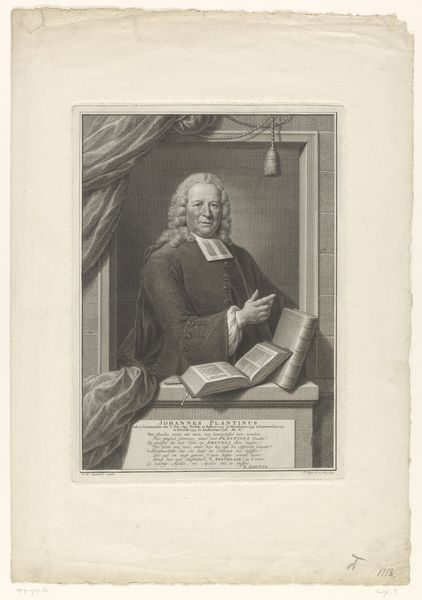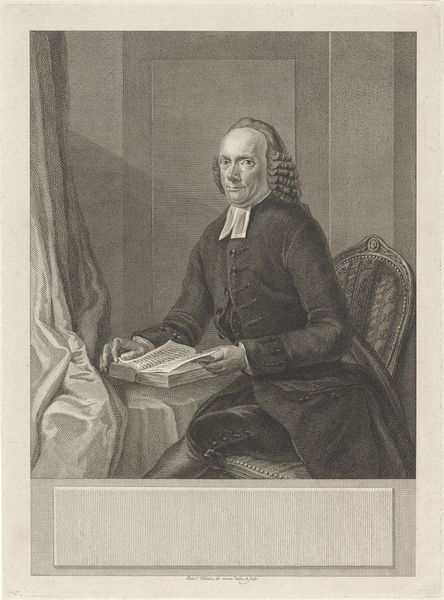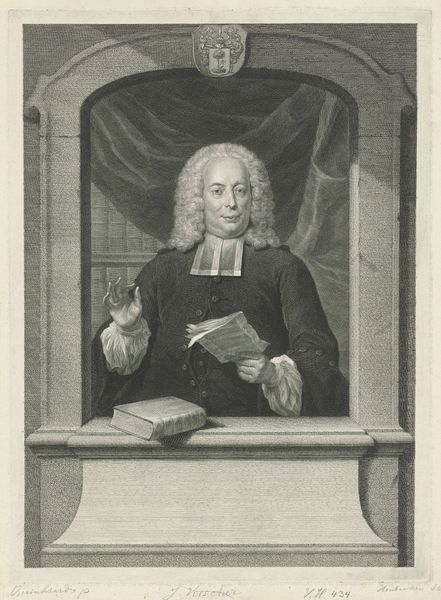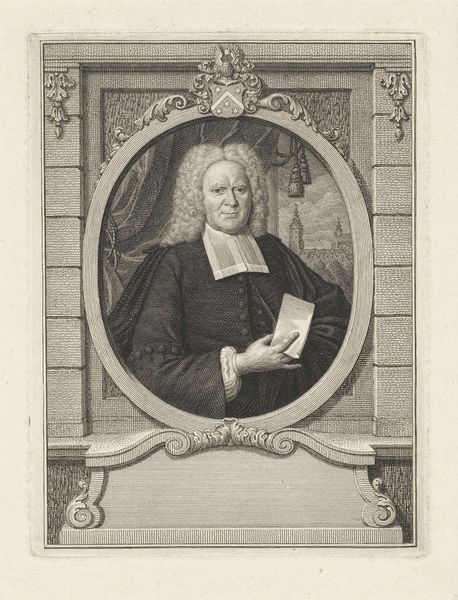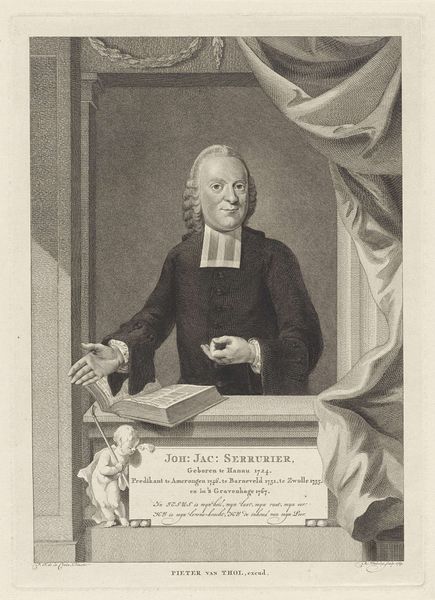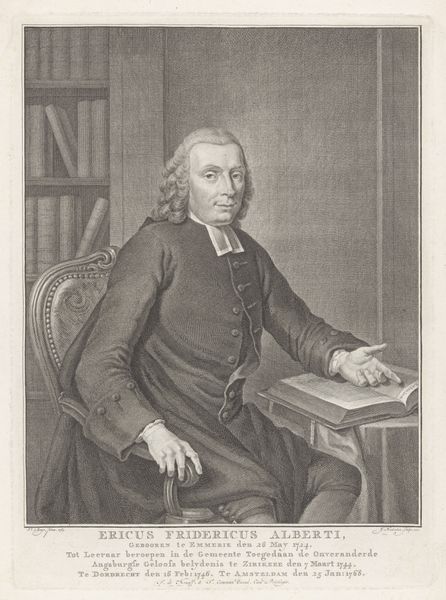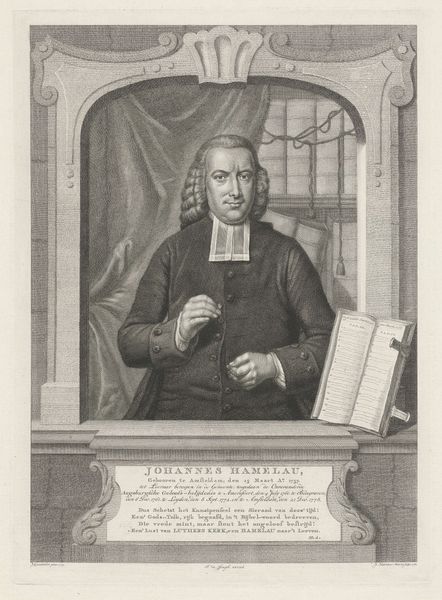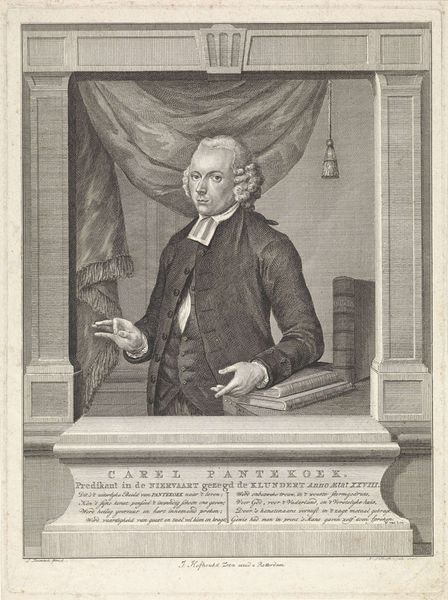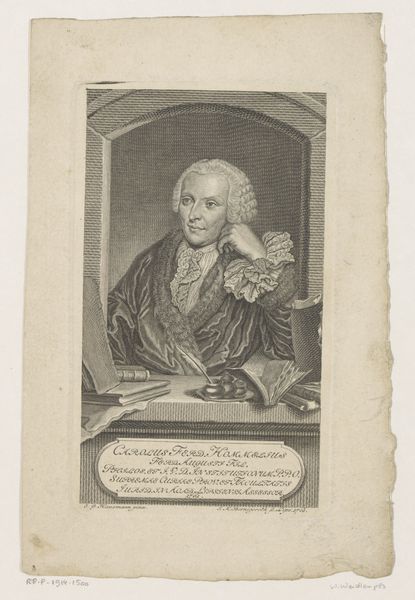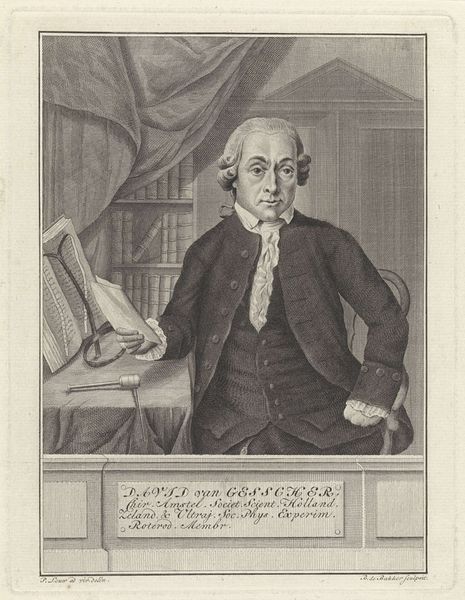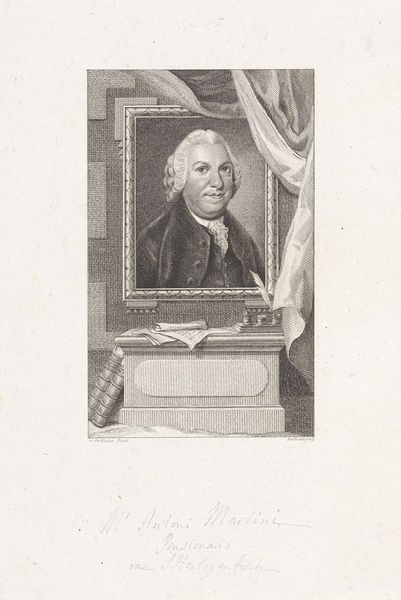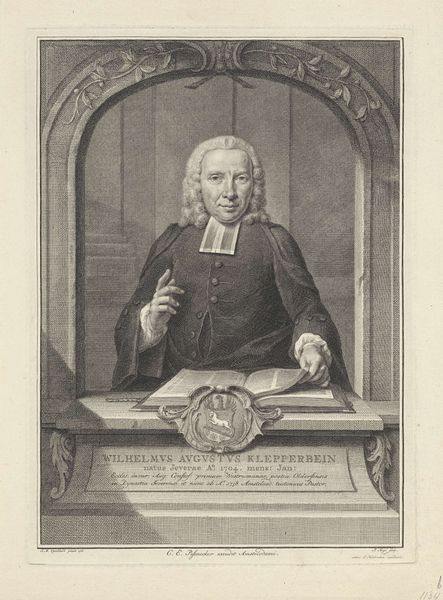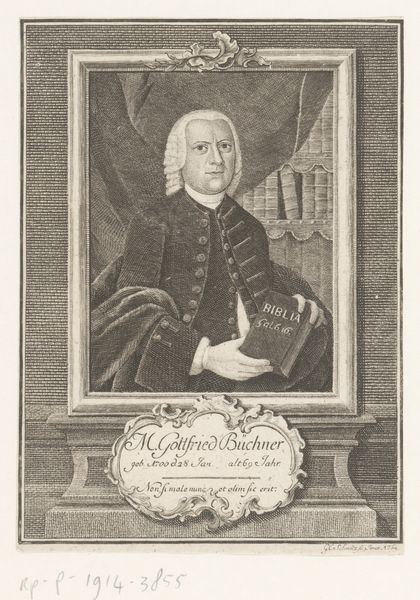
drawing, engraving
#
portrait
#
pencil drawn
#
drawing
#
neoclacissism
#
aged paper
#
light pencil work
#
pencil sketch
#
old engraving style
#
history-painting
#
academic-art
#
engraving
Dimensions: height 350 mm, width 252 mm
Copyright: Rijks Museum: Open Domain
Curator: This is "Portrait of Theodorus Adrianus Clarisse," an engraving created by Pieter Willem van Megen between 1782 and 1784. It currently resides here at the Rijksmuseum. Editor: My first impression is one of reserved academia. There’s a distinct coolness to the greyscale palette, contrasted by what seems like a genuine, slight smile. Curator: Absolutely. It speaks to the era's emphasis on reason and order. The subject, likely a man of the cloth given his collar, is staged in a window or doorway framed against his substantial book collection, signifying his status and intellectual pursuits within the institution. Editor: Precisely, and it raises questions about who had access to education and knowledge during that period. These institutions weren’t always bastions of egalitarianism. What statements were being made when portraying a sitter this way? Who was this work trying to reach? Curator: A good point. Commissioned portraits like these played a crucial role in constructing and maintaining social hierarchies. Displaying this engraving was about cementing Theodorus Adrianus Clarisse's position within the learned elite. The meticulous details and academic art style add to its overall feeling of scholarly formality. Editor: I can’t help but consider the act of "framing" a person and a portrait. By placing his body on this balcony, he is presented to the viewer as someone separate or even elevated. What does it tell us when he is portrayed in between two open books as a scholar? Curator: The books emphasize a wealth of wisdom but could also underscore societal power structures. Van Megen carefully balances the public image he projects versus the real-world issues around enlightenment ideals and privilege at this moment. Editor: That is very astute. It feels less about an authentic representation of character, and more of a performance meant to be witnessed by an elite, educated audience who know to "see" their power being portrayed and therefore feel assured by it. Curator: Exactly. The success of this work hinges on conveying those accepted messages to a certain audience segment who understands those social and political markers. Editor: Indeed. It is about reading these symbols now and deconstructing what their intentions were back then, especially when the system the man upheld was intrinsically unequal. Curator: Thank you. Thinking through those additional lenses makes it easier to dissect the original goals versus current perspectives. Editor: Thank you, it also underlines art's role in visually affirming social standings.
Comments
No comments
Be the first to comment and join the conversation on the ultimate creative platform.
